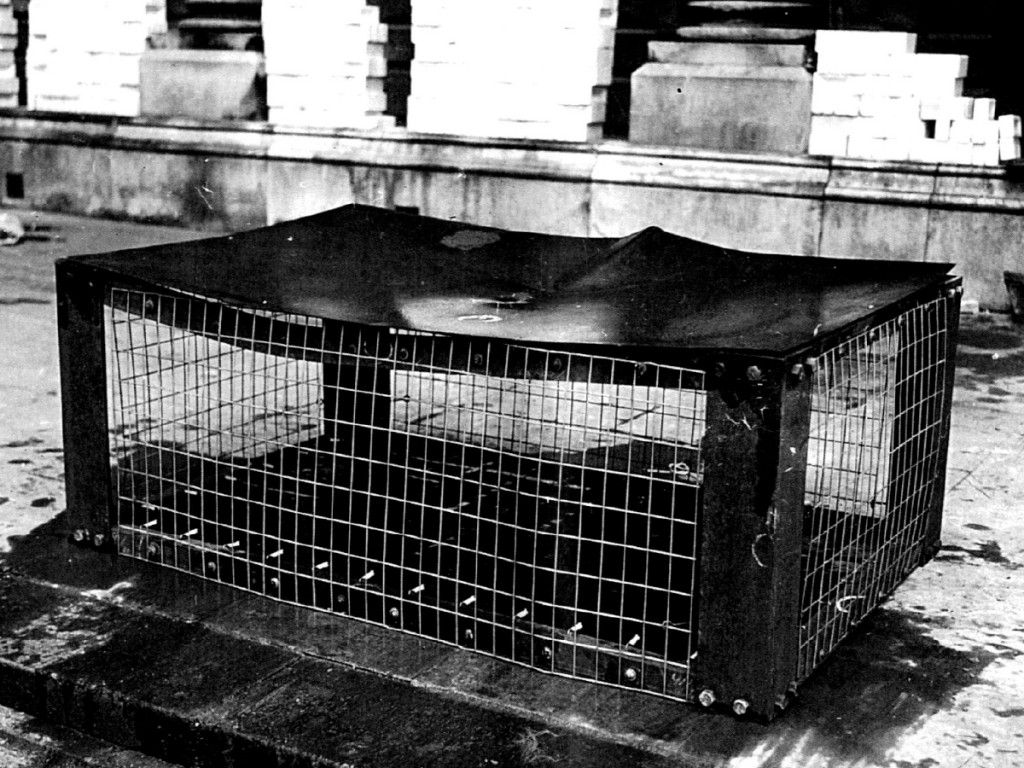
Share this:
Lecture Performance: From Above and Below
28/02/15 12pm

‘From Above and Below’ is a free lecture performance event that brings together a series of artists investigations into the shifting parameters of contemporary warfare. With the intention to not only convey the position or physical viewpoint — from above — which the state apparatus utilises as part of modern day conflict, exemplified by the use of armed drones and aerial bombing. In particular this event focuses on the position — from below — mobilising the domestic arena as a platform, and as a material and human register of this perceivable external threat. By exploring this condition the presented works observe a violent interpenetration of private and public spheres, a condition that is intensified by the multi-scalar effects of war.
The proposition for the event is thus to better understand the effect of being positioned ‘From Above and Below’ and to analyse the transformations this doubled condition might create, as it impacts directly upon the sensitive and difficult nature of the territorial subject, especially the human subject within the home.
‘From Above and Below’ has been realised by artist and PhD researcher Helene Kazan as a way to reflect upon key issues that are central to her practice but also of contemporary urgency. In bringing together the participants in this event, Kazan reminds us that the violence of events that are both distant to us and that are constituted through a regime of distance, always produce their complex counter-narratives and effects on the ground.
12.00pm
Drone Strike Investigation. Case study no. 2: Mir Ali, North Waziristan, October 4, 2010 – Eyal Weizman
On October 4, 2010, a US drone struck a home in the town of Mir Ali, North Waziristan, in Pakistan, killing five people. One of the surviving witnesses to this attack is a German woman, who lived in the house at the time with her two-year-old boy and her husband. Together with Forensic Architecture, this witness built a digital model of her home, which no longer exists. During a day-long process of computer modeling, the witness slowly reconstructed every architectural element of her house. Placed virtually within the space and time of the attack, the witness was able to recollect and recount the events around the strike.
Following a screening of the film produced for the Drone Strike Investigation into the Mir Ali Case in North Waziristan, Helene Kazan will interview Eyal Weizman on the investigation and his recent work with MAPP.
1.30pm
‘Home is a 3-year shelf-stable pizza’ – Jesse Connuck
‘Home is a 3-year shelf-stable pizza’ looks at military food rations as a lens for analyzing the ways military power shapes the daily life of soldiers, and the way those soldiers’ ideas of home shape military strategy. Through an examination of the ways food operates in zones of conflict, this research outlines an interest in the politics of cultivating a sense of home and comfort at war, and the biopolitics of government-dictated nutrition.
‘Home-Image’ – Daniel Mann
Traditional ideas of home, homeland and nation have been destabilized, both by new patterns of physical mobility and migration and by communication technologies which routinely transgress the symbolic boundaries around both the private household and the nation state. By critically questioning the circulation of images that frame domestic spaces in Palestine and Israel, this research articulates a political ontology of images that depicts the home both as a shelter and as a volatile war zone. It argues that while images are traditionally understood as representations of actual places, the home, as it is theorized here, is always already a virtual image.
Q&A
3.30pm
(De)constructing Risk: A Domestic Image of the Future – Helene Kazan
The domestic space – the home or the house – is the site where a complex range of values converge and where small-scale actions of preparedness or anticipation mediate the effects of risk and its management into a range of affective and experiential registers (realised in the form of taping or re-enforcing outer walls). This research seeks to understand the way the domestic arena forms a relationship between risk observed as an abstract calculus (experienced through the real-estate market), and risk felt as a tangible, bodily threat (experienced within the home). Exposing the contradictions operating across differing modes of risk perception in order to examine the ways in which they contribute to (de)constructing the home as a site of security.
F/EAR: Living Under Drones – Susan Schuppli and Tom Tlalim
‘It is a queer experience, lying in the dark and listening to the zoom of a hornet which may at any moment sting you to death. It is a sound that interrupts cool and consecutive thinking about peace. Yes it is a sound – far more than prayers and anthems – that should compel one to think about peace’ From Virginia Woolf ‘Thoughts on Peace in an Air Raid’, October 21 1940.
Q&A
Please note that the upper galleries of David Birkin’s exhibition Mouths At The Invisible Event will not be viewable during this event.
FREE, RSVP HERE
© Indoor Air Raid Shelter. Tests carried out by the Research and Experimental Department. Flat-topped shelter Type T. This shelter was first tested by dropping a heavy block of concrete weighing 350 lbs from a height of 6 ft. The flat top was only dented. The shelter was then subjected to a second test in which a floor weighing 1,800 lbs and pivoted at one side was dropped 6 ft 6 inches and with a swinging action so that it struck one top of the edge of the shelter as it fell, simulating the manner in which the floor of the house usually collapses. The steel angle at the top edge was bent.” Sourced from the Imperial War Museum.